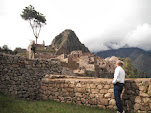Greetings! Throughout history, poets and artists have held a profound influence on shaping society's understanding of theological concepts. Percy Shelley's assertion that poets are "the unacknowledged legislators of the world" rings true when examining the impact of figures such as Dante, Leonardo da Vinci, Michelangelo, and Milton on mainstream perceptions of theology.
Dante Alighieri's, The Divine Comedy, stands as a monumental work that not only provides a vivid depiction of the afterlife but also contributes significantly to the popular understanding of concepts like purgatory, heaven, and hell. Dante's imaginative portrayal of purgatory as a
realm of purification, where souls undergo penance to cleanse themselves before ascending to paradise, has permeated Western culture and influenced how many perceive the journey of the soul after death. The vivid imagery and moral allegory presented in Dante's work continue to shape the way people envision the spiritual realm, often more than the concept as taught by Catholicism.
Leonardo da Vinci's masterpiece, "The Last Supper," has likewise left an indelible mark on popular theology. Through his artistry, Leonardo captured the climactic moment of Jesus sharing the Passover meal with his disciples, immortalizing the event for generations to come. The composition of the painting, with Jesus at the center surrounded by his twelve apostles, has become the quintessential representation of this sacred event in Christian iconography. The visual depiction of this pivotal moment in Christianity has helped cement its significance in the collective consciousness, influencing how people perceive and interpret the
Last Supper's theological implications.
Similarly, Michelangelo's iconic frescoes in the Sistine Chapel, particularly his portrayal of the
creation of Adam has had a profound impact on popular theology. The image of God reaching out to touch Adam's hand, conveying the moment of divine impartation of life, has become an iconic symbol of humanity's relationship with the divine. Michelangelo's masterful depiction of this scene has contributed to the prevailing understanding of God as the ultimate creator and sustainer of life, shaping perceptions of theological concepts related to creation and human existence. The iconic image continually gets recast from the movie E.T., artificial intelligence campaigns to beer ads.
John Milton, through his epic poem "Paradise Lost," has significantly influenced mainstream
conceptions of theology, particularly in relation to the Fall of Man and the nature of sin. Building on the work of Bishop Augustine of Hippo’s work, Milton's portrayal of Adam and Eve's expulsion from the Garden of Eden has become deeply ingrained in Western cultural consciousness. His exploration of themes such as free will, temptation, and redemption has shaped theological discourse for centuries, challenging traditional interpretations of biblical narratives and prompting reflections on the complexities of human nature and divine
providence.
I have long been interested in how the works of writers and artists have played a pivotal role in shaping mainstream understanding of theology. Charlemagne would have appreciated the
role of images on common perception. He used artist rendering of biblical stories in churches to educate even the illiterate of Christianity. Through their imaginative expressions and artistic interpretations of religious themes, figures like Dante, Leonardo da Vinci, Michelangelo, and Milton have left an enduring legacy that continues to influence how people perceive and engage with theological concepts. Their contributions remind us of the power of creativity
and imagination in enriching our understanding of the divine and our place within the cosmos.
All the best,
Tom


No comments:
Post a Comment